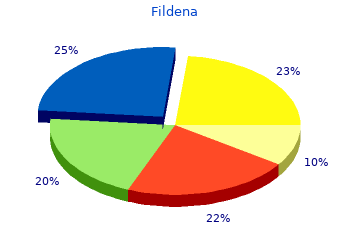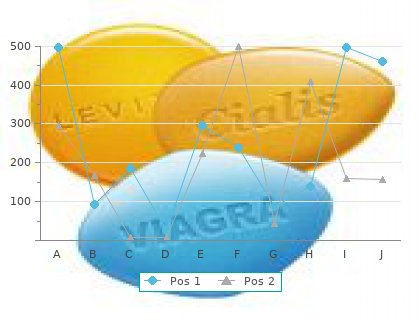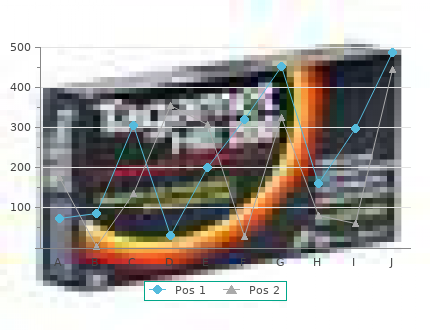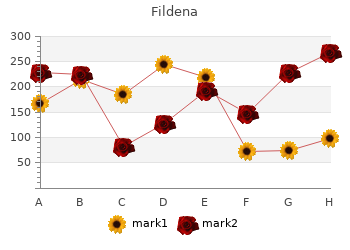Fildena
By Y. Corwyn. University of Portland.
I finished this book with a heavy feeling of injustices which have not been righted generic 50mg fildena with mastercard. Individuals whose cases are represented here are people who were subjected to a co-ordinated assault spearheaded by HealthWatch members. Organisations which have been criminalised and publicly traduced have been all but destroyed. The only individual remedy has been for those maligned to take civil actions of one kind or another against their detractors. I firmly believe that there should be some kind of public, judicial tribunal or independent judicial review of all the cases of those whose names and reputations were damaged by HealthWatch, or by those associated with the organisation. These victims of medical orthodoxy should be allowed a forum within which to put their case, without fear of repercussions, even at this late date. The rules and regulations which cover business practices in the marketing of pharmaceuticals have to be reconsidered and endorsed with serious penalties. With respect to HealthWatch itself, it seems impossible that the organisation should be allowed to retain its present charitable status. Not only is it a radical campaigning organisation, it has supported covert attacks upon doctors and even other charities. I began my work with what I thought was a clear understanding of the difference between public and private medicine. I ended it with an even clearer understanding that the major differences between public and private medicine had next to nothing to do with costs, charges, or affordable treatments. It now seems to me that often there is only one stable criterion which separates public and private medicine. Public medicine is almost always orthodox medicine which leans heavily towards the pharmaceutical treatment of illness. Beyond the strictly patrolled boundaries of orthodoxy, all treatments are in the main forced to be part of the private sector. In relation to medicine I now recognise at least three areas of analysis of which I was previously ignorant. Firstly, there is the ongoing tragedy of the mistakes which doctors make, sometimes on a national scale and often involving large numbers of patients. This iatrogenic plague, which damages through wrong diagnosis, and quack or badly administered orthodox treatments, is uncovered in greater proportion each day. Secondly, there is the professional defence mounted by doctors against non-orthodox medicine. Treatments and techniques, which might cut the health budget by millions of pounds and benefit the health of the nation, are ignored because they challenge the professional mystique and monopoly of doctors or threaten the profits of pharmaceutical companies. Finally, there is the whole problematic paradigm of a pharmaceutical company-led health service with its drug-orientated diagnosis and treatment. I used to believe not only in the fundamental principle of socialised health care, but also that such a system inevitably involved a more philanthropic and caring approach than that provided by a private service. Medical professionals, I believed, inhabited a higher moral ground serving the public good within the National Health Service. In fact, I was to learn that many doctors are just as influenced by the biases of class and education and prone to the same mercenary financial inducements as other professionals, whether they work inside or outside a socialised system. While most socialists argue the case against market-organised health care as they argue against all other cases of market economics, they consistently fail to address the issue of the drug company monopolies and cartels, an issue which makes the health provision market different from other markets. As long as health care is overshadowed by the drugs monopolies and cartels and medical practice dominated by the closed shop of professional medical training, the idea of market economics is as fallacious as the socialist idea of a socialised dispersement of care within a need-led system. Of all the industries apart perhaps from defence, pharmaceutical production is the only one allowed to support the monopoly practices which presently determine the price and availability of its products. Such monopoly practices have disastrous consequences for the public purse and the health of the consumer. Is it morally or ethically right that a private company makes profits of £200 million a year from a drug which has patently failed to cure anyone? Health care costs in Britain could be cut considerably by either statutarily restricting the price of pharmaceutical products or nationalising drug production, while maintaining a mixed economy in all types of medical research. In such circumstances, both the private and public sector research organisations would be working for the government. At the present time, by subsidising research rather than production, the government actually subsidises the private sector with public money. The resolve of the present government to cut public spending further will eventually result in the whole of medical research, production, marketing and prescription being controlled by a few enormous corporations. These corporations are presently regulated and made accountable by only the most feeble and incestuously enforced guidelines.


The current practice is not to provide sinks in radiopharmacy laboratories fildena 100mg low cost, although ready access to sinks in the immediate vicinity is necessary. Showers for the decontamination of personnel are no longer provided, since they may spread any radioactive contamination present to other parts of the body, particularly the eyes, or to laboratory facilities. In situations where high levels of activity are handled, it may be desirable to have dedicated eye wash facilities available. The radiopharmacy needs to be equipped with at least one isotope calibrator so that all activity can be measured accurately. Since radiopharmacies will be handling unsealed sources of radioactivity, contamination monitors will be required to check for any radio- activity that may have been spilt. The radiopharmacy needs to be equipped with suitable materials to deal with any such spillages. Storage areas will be necessary for radioactive materials as well as for non-radioactive components used in radiopharmaceutical preparation. These areas will need suitable shielding and, depending on the type of product being prepared, a refrigerator and freezer may also be required. A store for flammable products, such as solvents used in quality control procedures, may also be required. More advanced facilities Handling of volatile radiopharmaceuticals, particularly those based on 131 I, which are not intended for parenteral administration, should be performed within a fume cupboard, which exhausts air away from the operator. In radiopharmacies where blood labelling is performed, it is important to protect the operator and any other blood samples in the radiopharmacy from contamination with blood. It is desirable to have a separate workstation for this function, which can be readily cleaned and disinfected after each labelling procedure, thus minimizing the possibility of contaminating one blood sample with another. Totally enclosed workstations incorporating centrifuges are available, enabling the entire labelling process to be performed in a more protected environment. A typical layout for a department preparing a wider range of radiophar- maceuticals is shown in Fig. In the general design of a nuclear medicine department, the entry, flow and exit of patients and staff should be separated from the entry, flow and exit of radioactive materials. Facilities for in-house preparation of kits In departments where kits are prepared in-house, extra facilities are needed that are preferably distinct from those used for radioactive manipula- tions. For such non-radioactive, non-hazardous manipulations the most suitable solution is a laminar flow cabinet in which the flow of air is horizontal from the back of the cabinet, over the materials being processed and towards the operator. Such arrangements provide a high degree of protection against contamination of the product but are unsuitable when handling radioactive materials. In these departments a lyophilizer will be necessary for the preparation and subsequent storage of freeze dried kits with a long shelf life. In most cases the physicist will not require a specific laboratory but will operate from a standard office. However, there is a need to provide for the following (even where no physicist is employed): (a) Radiation safety: —Provision of a storage area for decontamination kits and radiation monitors; —Maintenance of records. The medical physics laboratory is usually a slightly expanded office and may comprise a small workbench, any necessary storage space and one or more computer terminals. The area would normally be considered ‘non-active’ and therefore have no specific radiation protection requirements. The detector arrays are mounted on a gantry and make a complete or part circle around the patient, enabling volume detection. It also has higher spatial resolution because it provides information about the origin of the annihilation. An average facility will include: (a) Rooms for reception: —Scanner, control, waiting, injection, blood testing, reporting and admin- istration rooms. Staff requirements (a) Medical staff: —One or two doctors; —One or two technologists; —One nurse. After defining the level of service and required equipment, the director of the service should submit a specification (Section 4. At this stage, it is extremely important to plan the training of medical staff, technicians, physicists and engineers, arrange service contracts, and make provisions for the future updating of hardware and software. The following can take place once installation has been completed: —Acceptance testing; —Phantom studies; —Providing physicians and patients with information; —Training of technical staff. The following can take place after operation has commenced: —Communication with clinicians; —Evaluation of results; —Follow-up; —Joint conferences; —Continued future technical and medical education. A cyclotron is composed of a pair of magnets, holding a vacuum tank in which two or four D shaped electrodes are fixed. The particles are attracted or propelled by the alternatively charged D electrodes to gain higher energy and circle in the middle of the tank under the control of the magnets.


The views may be improved by deeper inspiration facilitate intravenous line placement effective fildena 100mg. The pericardium is identified as a thick echogenic line within which the cardiac chambers are seen moving. The right ventricle lies against the liver Knowledge of cardiac performance and chamber size can be criti- separated from it by the pericardium and the diaphragm. The absence of activity of the left ventricle denotes a dismal prognosis in cardiac arrest and may assist in deciding at which point to cease resuscitation. Effusion The identification of a pericardial effusion is relatively easy, but identifyingtamponadetakesskillandexperience. In medical patients in extremis any collapse of the right ventricle as it fills in diastole or paradoxical movement of the septum (into the left ventricular cavity) is evidence of tamponade. If the right ventricle is pressure loaded and bigger than the left ventricle, especially if accompanied by paradoxical septal motion, this is suggestive of massive pulmonary embolus and may alert the clinician to the need for thrombolysis. An empty left ventricle, suggested when the ventricular walls meet end systole, suggests profound hypovolaemia. The Morrison’s pouch view (position 3) is obtained by moving the transducer to the mid-axillary line at the level of the xiphisternum. By adjusting the angle and rotation 2 1 4 the right kidney and liver (hence Morrison’s pouch) are bought into view. Fluid appears as an anechoic – black – stripe separating 5 liver from kidney (Figure 12. The probe may then be moved 3 6 cranially as described previously to allow the diaphragm and pleura (position 2) to be seen to assess for pleural effusion. The identical procedure is then performed on the left side to gain views of the spleen, left kidney (position 5) and chest (position 4). Finally the transducer is placed just cranial to the pelvic rim (position 6) and the transducer angled towards the rectum. Fluid appears as and images are similarly accurate to studies performed in hospital. Prehospital and emergency placement is associated with high rates of misplacement of up to 38%. The cannula is introduced steeply (45–60 degrees to the skin) compared with blind insertion. Correlation of optic Nerve Sheath tification of dislocations and guide reduction with similar accuracy Diameter with Direct Measurement of Intracranial Pressure. Like plain films, images are obtained in Shock in the evaluation of the Critically ill. Pilot study to evaluate the accuracy of Ultrasonography in Confirming Endotracheal Tube Placement. Glossary • Before picking up the probe, think about how the results of the scan will change your management. If it won’t – do not delay • Anechoic: No reflected ultrasound; appears black; suggests fluid. This is to assist the sonographer in orientation of the probe: convention is for the marked end to be orientated to the patient’s right or Further reading cranially; unless performing a cardiac study when it is orientated to the patients left. Modern head injury management • Understand the resuscitation end points and principles of focuses on preventing and managing the secondary insults. Severe head injury is associated with a high mortality rate (30–50%) and many survivors will have persistent severe neurological disability. Prompt identification and appro- critical priate early management of such patients is necessary to ensure volume optimal long-term outcome. Patients may require extrication from vehicles, may be agitated and combative, or may require advanced airway management in a difficult environment. Coordination between the various emergency services is essential to ensure that the patient is managed in a timely fashion. Primary brain injury occurs at the time of impact and includes injuries such as subdural and extradural haematomata, Subfalcine herniation cerebral contusions, and axonal injury. These cerebral insults con- tinue to evolve resulting in a secondary brain injury which is Expanding characterized by impaired regulation of cerebral blood flow and haematoma Transtentorial metabolism. The motor score is the most powerful predictor of outcome (except in cases Subconjunctival of paralysis – therapeutic or traumatic). Abnormal posturing can Bilateral periorbital haemorrhage be indicative of severe brain injury (Figure 13. Decorticate pos- haematoma Haemotympanum (Racoon eyes) Otorrhoea turing, where the upper limbs flex and the lower limbs extend Rhinorrhoea involuntarily, reflects injury at the level of midbrain or above Mastoid bruising (cerebral hemispheres, internal capsule, thalamus). Decerebrate (Battle’s sign) posturing, where both the upper and lower limbs extend involun- tarily reflects injury at the midbrain or below. Anydifferencebetween Utters inappropriate words 3 the left and right side should raise a suspicion for significant head Incomprehensible sounds 2 injury.
8 of 10 - Review by Y. Corwyn
Votes: 188 votes
Total customer reviews: 188

